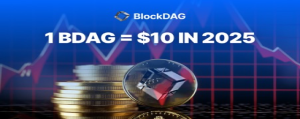FCA consults on changes to MiFID II tick size regime
Under the proposed amendments, the tick size regime will not prevent trading venues from matching large in scale orders at mid-point within current bid and offer prices.

The UK Financial Conduct Authority (FCA) has earlier today posted its latest quarterly consultation paper outlining, inter alia, proposed amendments to the MiFID II tick size regime.
The EU Investment Firms Directive (IFD) makes some amendments to the Markets in Financial Instruments Directive (MiFID II), including the MiFID II tick size regime. The regime’s purpose is to set minimum increments by which prices for equity and equity-like instruments can move to support orderly markets. The regime prevents participants from being able to submit orders with infinitesimal price differences, in order to compete for order flow in a way that can adversely affect the price formation process.
Article 64(5) of the IFD amends MiFID II to allow for trading venues to match buy and sell offers which are “large in scale” (that is, orders that are larger in scale compared with normal market size) at the mid-point price within the current bid and offer prices.
MiFID II is an EU Directive, which requires member states to give effect to it through their respective national laws and regulations. The changes made to MiFID II by the IFD are required to be included in national laws and regulations by March 26, 2020.
During the transition period this also applies to the UK. The changes relating to the tick size regime will be implemented in the UK. The changes will be implemented in the UK through Treasury legislation and the FCA Handbook.
The tick size provisions for trading venues operated by market operators are included in the Recognition Requirements Regulations (RRRs) and mentioned in the Recognised Investment Exchange and Recognised Clearing House sourcebook (REC) in the Handbook.
The FCA is now consulting on changes to its Handbook to make changes to the tick size regime.
The regulator proposes amending the rules to set out that the tick size regime will not prevent trading venues from matching large in scale orders at mid-point within current bid and offer prices.
The FCA has not previously, as part of its supervisory approach to the tick-size regime, prevented trading venues from allowing for the off-tick execution of orders that are large in scale. In FCA’s view, the tick size regime was not intended to apply in such circumstances. The amendment to the regime constrains such off-tick trading to the mid-point.
In terms of costs stemming from these changes, the regulator says there should be no detrimental effect on price formation of allowing large-in-scale trades to happen at a price which lies outside the constraint of the tick-size regime. That regime is designed to protect the price formation process on a central limit order book by imposing a cost on executing at the spread which deters excessive trading. Trading venues may, however, have to adapt their systems to ensure that large-in-scale trades only happen outside the constraints of the tick-size regime at the mid-point price.
Regarding benefits, the FCA says that allowing large-in-scale trades to execute at the mid-point enables buyers and sellers to equally share the benefits, in terms of a lower explicit cost of execution, where both are happy to trade outside of the constraints of the tick-size regime.









